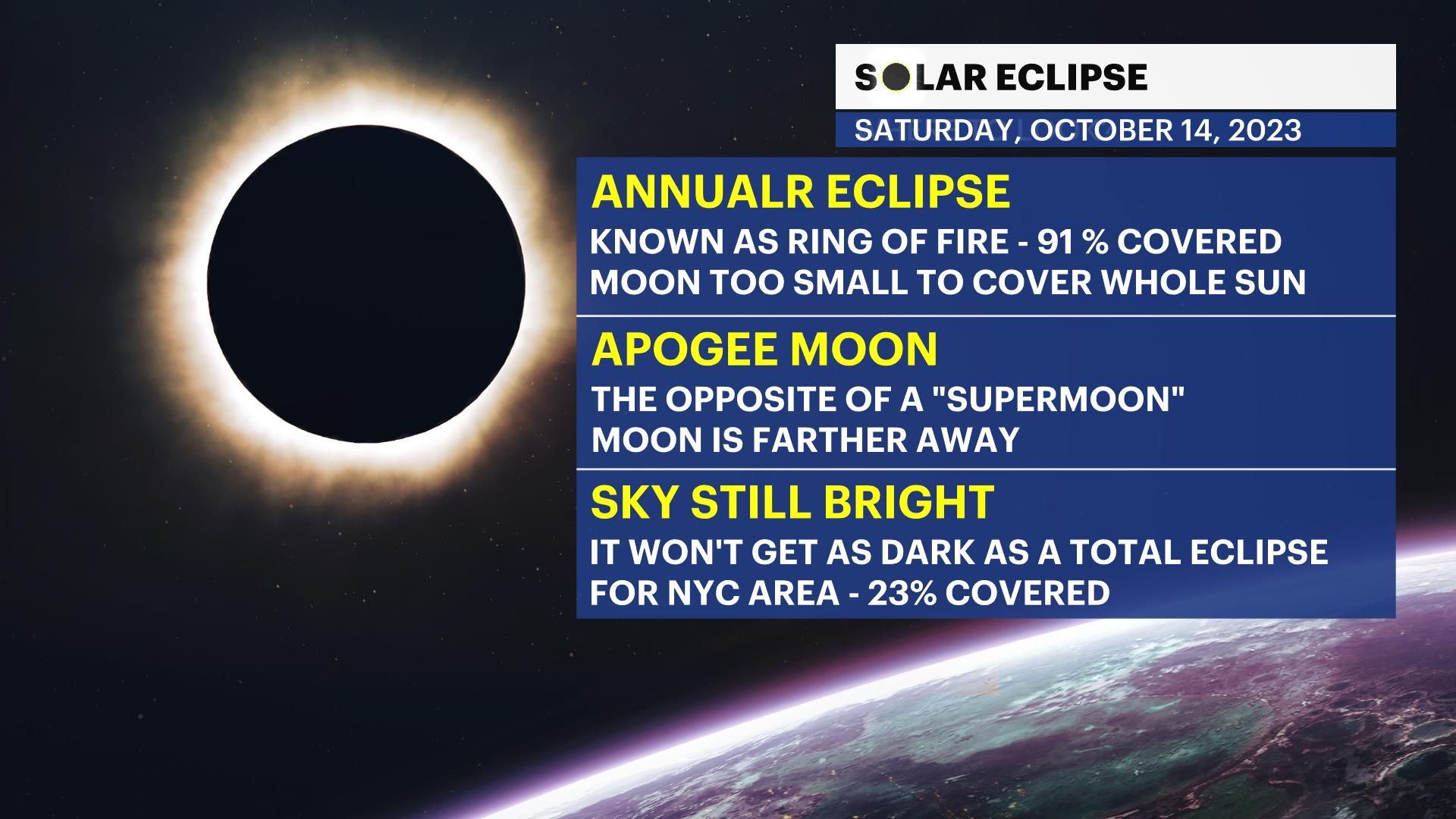More Stories
Looks like the weather unfortunately will not cooperate in the tri-state area this weekend to see the solar eclipse. But weather aside, we wouldn’t have been able to see the whole annular eclipse anyway.
For us, it would look like a small chunk of the sun was missing, roughly between 20-30%. This would have caused the sun’s light to dim slightly and look more like a cloud was passing over it.

Solar eclipses happen when the sun, moon and Earth all line up either completely or partially to create a beautiful display in the sky. On Saturday, the moon will be passing between the sun and Earth in a direct line. To the observer on Earth, it will appear as if it’s covering it or taking a big bite out of the sun. There are different types of eclipses and this one is special because it’s known as the “Ring of Fire.”
This type of eclipse is called an annular eclipse. It happens when the moon is in apogee and is slightly farther away from Earth. It ends up looking smaller. Remember just recently we were talking about those supermoons? That’s when the moon was slightly closer to Earth, and it appeared larger. Now it’s sort of the opposite effect. It’s not quite large enough to cover the entire sun. What’s left will be a very bright “Ring of Fire” on the outside.

Solar eclipses are often hard to catch. This annular eclipse will only cover a narrow path as seen on the national map. It will cross eight states out west. What does that mean for the rest of us? Areas outside will only have the opportunity to see part of the eclipse.
Eclipses repeat in cycles of 173 days, so approximately every six months. Things just have to line up perfectly and of course, the sun would have to be out at that time where you live to view it. There is another eclipse happening next year on April 8, 2024. This one will be a total solar eclipse. The path will be a bit closer to home and hit parts of the Northeast, near the Canadian border.
The moon's shadow will be traveling at 3,048 mph, with the annularity lasting four minutes and 42 seconds out west. Please keep in mind that looking at the sun, even for a brief period, is very dangerous. Please do NOT do that. Special filters are needed, such as eclipse glasses, or viewing it indirectly, are the only safe ways. More tips are seen below

More from News 12
2:39

Clouds are the cornerstone of the forecast but temps gradually warm through the week
2:26

Icy precipitation causes dangerous road conditions in Monmouth County
3:02

Snow and ice fall across parts of New Jersey
1:49

Storm to bring heavy rain & strong winds across the tri-state
2:33

Sadly, we will miss the peak of the Geminid meteor shower this year, but we'll get snow instead!
1:59
